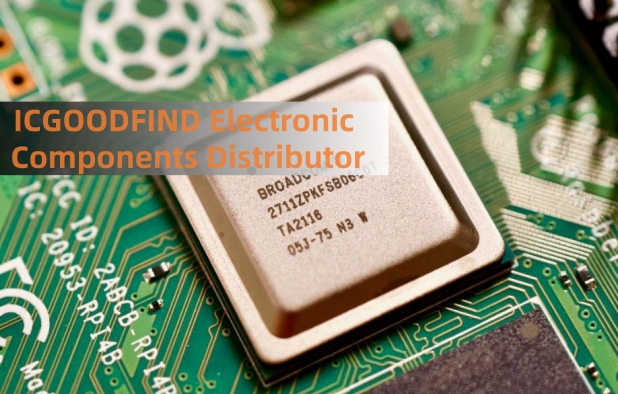**High-Performance Audio DAC Design and Application Using the AD1955ARS Multi-Bit Sigma-Delta Converter**
The relentless pursuit of high-fidelity audio reproduction drives the development of sophisticated digital-to-analog converters (DACs). Among the various architectures available, **multi-bit sigma-delta (ΣΔ) converters** represent a pinnacle of performance, balancing dynamic range, linearity, and immunity to clock jitter. The **AD1955ARS from Analog Devices** stands as a classic exemplar of this technology, enabling designers to create exceptional audio systems for professional and high-end consumer applications.
**Architectural Advantages of the AD1955ARS**
The AD1955ARS is not a typical single-bit or bitstream DAC; it employs a **multi-bit sigma-delta modulator** followed by a switched-capacitor DAC structure. This architecture provides several critical advantages. Firstly, the multi-bit feedback loop within the modulator **inherently reduces quantization noise** and shapes a greater portion of it out of the audio band, resulting in a superior signal-to-noise ratio (SNR). Secondly, and perhaps most importantly for audio quality, the multi-bit design exhibits significantly **lower sensitivity to clock jitter** compared to single-bit counterparts. Jitter on the master clock directly translates into amplitude noise in single-bit outputs, a problem that is markedly reduced in the AD1955ARS. This translates to a cleaner, more stable analog output with improved stereo imaging and detail retrieval.
**Critical Design Considerations for Implementation**
Successfully implementing the AD1955ARS requires meticulous attention to several design aspects to realize its full performance potential.
1. **Power Supply and Grounding:** High-performance audio demands ultra-low noise power rails. The AD1955ARS requires separate analog and digital power supplies (typically ±5V for analog, +5V for digital) with **comprehensive decoupling**. Each supply pin should be decoupled to the relevant ground plane using a combination of low-ESR ceramic capacitors and larger tantalum or electrolytic capacitors. A **star-grounding** configuration is highly recommended to prevent digital noise from corrupting the sensitive analog output signals.
2. **Clock Integrity:** While less sensitive than other architectures, jitter performance is still paramount. The master clock (MCLK) signal must be clean and stable. It is often beneficial to use a **dedicated low-jitter clock generator** or a crystal oscillator located very close to the DAC's MCLK input. Proper transmission line termination may be necessary for long traces.
3. **Digital Filter and Interface:** The AD1955ARS accepts standard audio data formats (I²S, left-justified, right-justified) and includes an on-chip digital interpolation filter. The choice of interface mode and the external digital filter settings (if used) can impact the final sonic character. Designers must ensure **precise synchronization** between the data (SDATA), word select (LRCLK), and bit clocks (BCLK).

4. **Analog Output Stage:** The device provides differential current outputs. Converting these to a single-ended voltage signal requires a high-quality, external **operational amplifier (op-amp) based I/V converter**. The choice of op-amp is critical; it must have low noise, low distortion, high slew rate, and be stable with the capacitive load presented by the DAC's internal switching. Following the I/V stage, a dedicated **low-pass filter (LPF)** is essential to remove any residual high-frequency noise from the sigma-delta modulation process. This filter should be designed for a flat in-band response and a sharp roll-off just above 20kHz.
**Application in High-End Audio Systems**
The performance characteristics of the AD1955ARS make it suitable for a range of demanding applications. It is a preferred choice in **professional audio equipment** such as digital mixing consoles, mastering-grade digital audio workstations (DAWs), and studio reference DACs, where absolute accuracy is non-negotiable. In the consumer realm, it forms the heart of **high-end CD players, dedicated DAC units, and integrated amplifiers**, prized by audiophiles for its musical and detailed presentation. Its multi-bit architecture delivers a sound signature often described as both **highly detailed and naturally analog-like**, free from the harshness sometimes associated with inferior converters.
**ICGOO**D**FIND**: The AD1955ARS multi-bit sigma-delta DAC remains a benchmark for high-performance audio design. Its effective blend of high dynamic range, excellent linearity, and robust jitter immunity provides a solid foundation. Achieving its theoretical performance in practice is an exercise in precision engineering, requiring exceptional care in power management, clocking, and analog stage design. For designers seeking to build reference-quality audio products, mastering the implementation of this converter is a rewarding endeavor.
**Keywords:**
* **Multi-Bit Sigma-Delta**
* **Jitter Immunity**
* **Analog Output Stage**
* **Dynamic Range**
* **High-Fidelity Audio**
